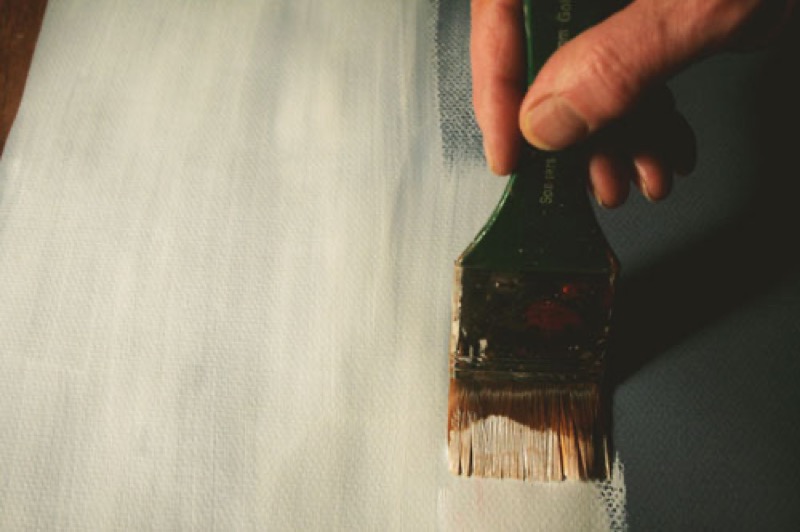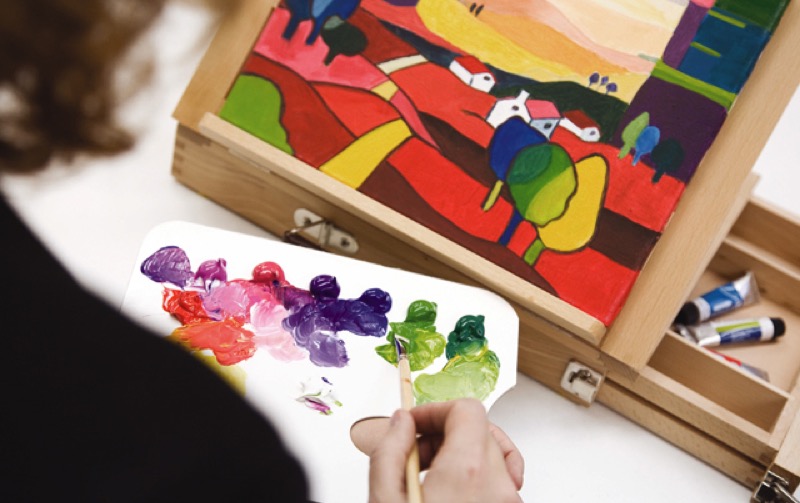While easy to use, acrylic paints do require some preparation! Some advice before getting started.

1. Applying a primer
There are ready-to-use paper, cardboard, wood, plywood and canvas media. But you can also decide to use an unprepped medium to which you apply a primer.
- A primer is a substance spread on a medium to prepare it to receive paint. Gesso, which is easy to use, is the most often used primer for acrylics. When dry, it forms an impermeable, very flexible layer.
- Apply the gesso in thin layers with a wide, soft bristle brush. Once dry, sand, then apply a fresh coat perpendicular to the previous one. Your goal is a perfectly smooth, white surface.

2. Organizing your colors
Organizing your palette is an essential step. Note that there is no one-size-fits-all approach and we all have our own habits. Here are some simple principles you can follow:
- Always start by putting together a list of the shades you'll need for painting your subject.
- Arrange your colors from lightest to darkest, by "families" (yellow, red, etc.).
- Make sure to always follow the same sequence, whatever your favorite shades happen to be: that way, you can find your colors with your eyes shut!
- Put a large amount of white at one end of the palette, because you'll be using it more than any other shade.
Trick of the trade
- Acrylics dry very fast, so make sure you only put small amounts of paint on your palette.
- If your colors are drying too fast, add a few drops of water with your paintbrush or use a little atomizer to wet them.
3. Have water on hand
Whether or not you decide to dilute your paint, you need to keep a large amount of water handy for cleaning your paintbrushes regularly.
- What kind of container do you need? It doesn't matter: a yogurt or jelly jar, a plastic bottle with the top cut off, a cup or a bowl… Ideally, you'll have at least two containers, one for cleaning your paintbrushes and the other for diluting your paint.
- What kind of water should you use? Just use tap water. You can also buy demineralized or distilled water, because purer water has less effect on pigments.
Trick of the trade
Make sure you set up your work space near a source of water so you can get water faster.
4. Remember your accessories: a rag, a sponge and paper towels
They are very useful for erasing errors, creating effects and wiping off your paintbrushes. Keep them near your work space.
Recommended product:
XL® Oil and Acrylic
